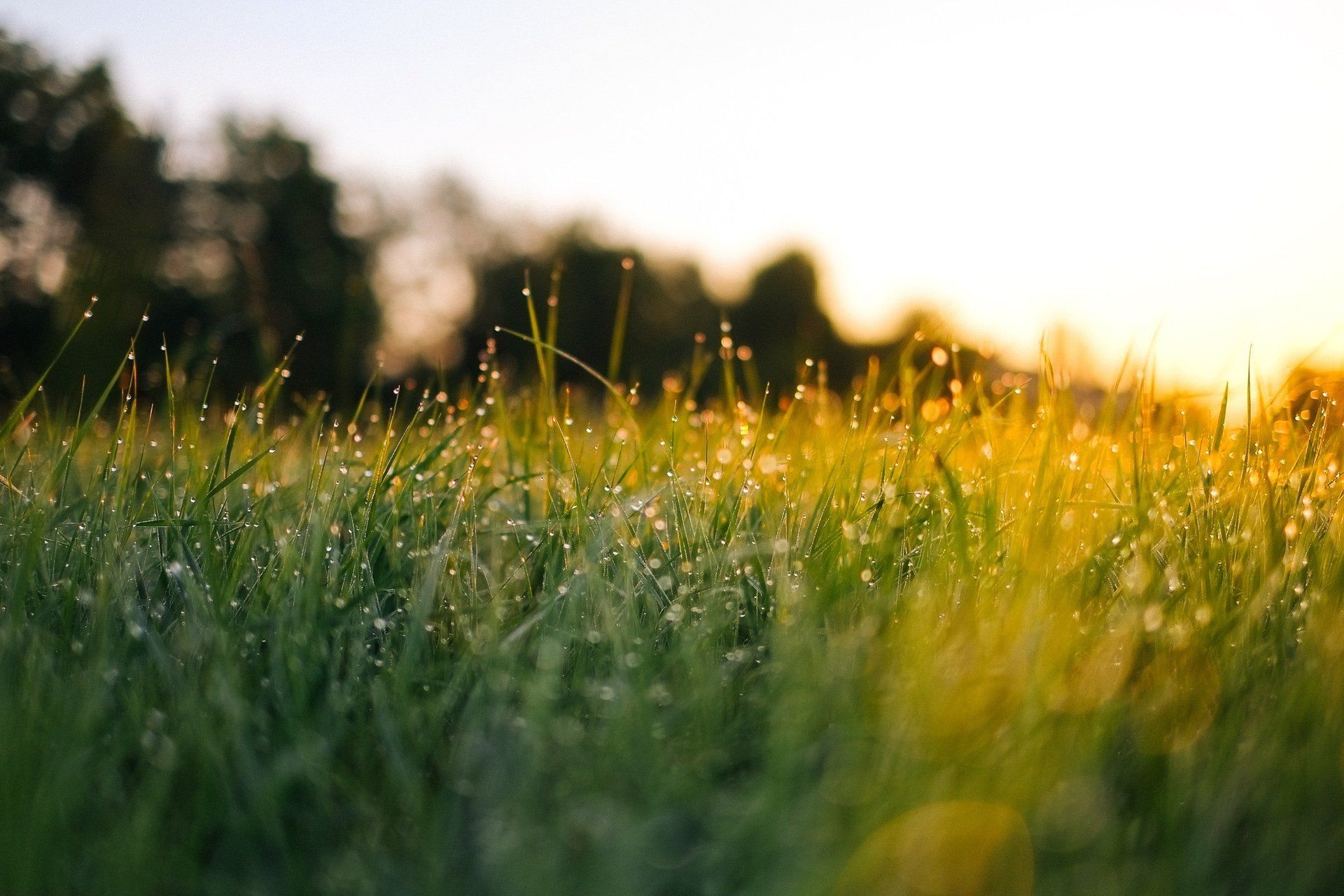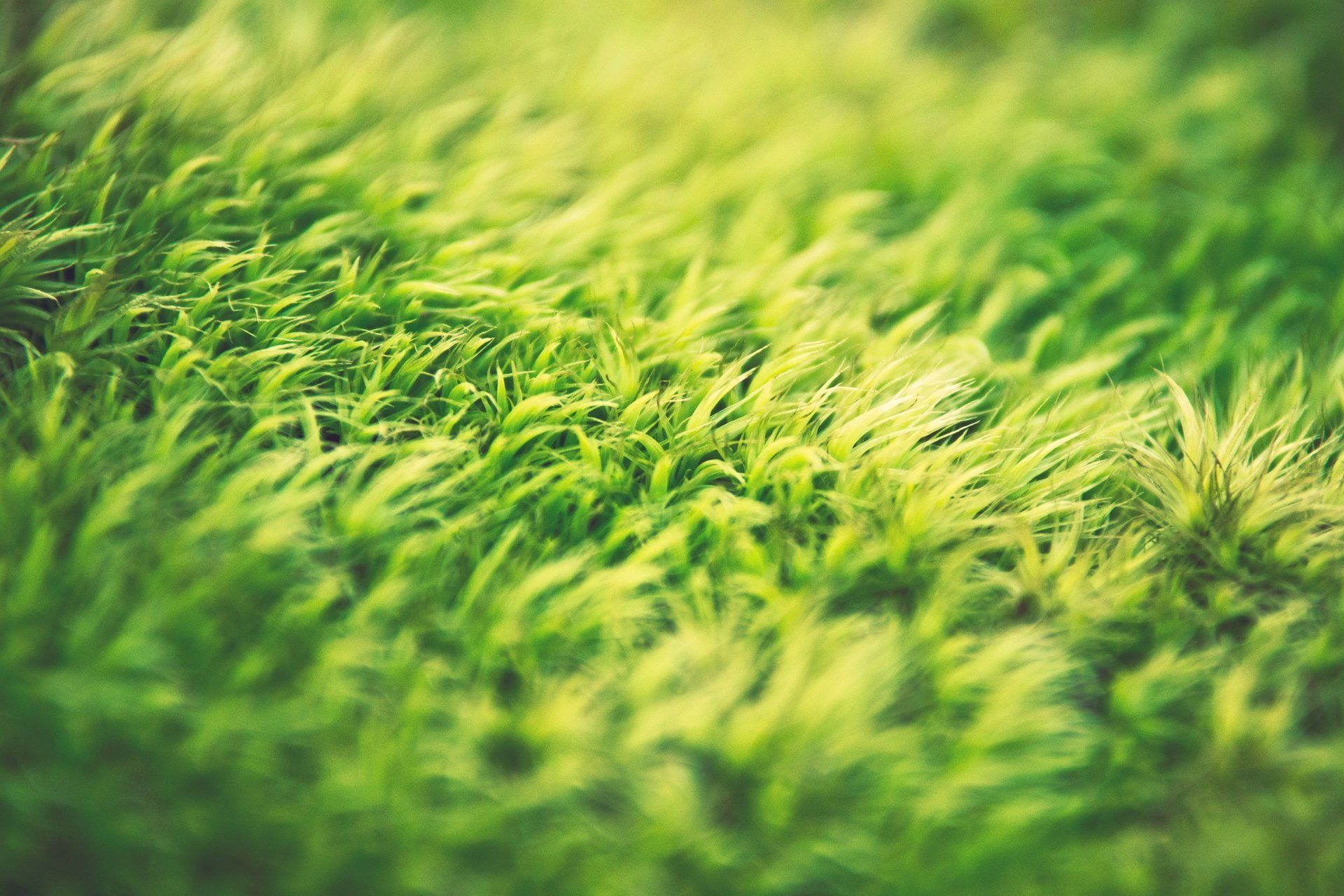Get Your Lawn Ready for Spring
- by Nic
- •
- 07 Mar, 2019
- •
We are often asked by clients when should they start mowing the lawn in the spring. Pick up any old lawn book and it will state that you should not mow the lawn between the end of October and end of February. In fact, in any mild spell of winter, a lawn benefits from a “monthly topping”

When day time temperatures get to double figures,
there is always some minimal grass growth and the garden is waking up with
daffodils showing and some out in bloom already. If we get another “beast
from the east” cold snap, this will halt growth a little, but spring will be
here soon so get prepared. The Green Keepers are already mowing fairways.
Turf grasses in lawns are now growing, so get out this weekend and 'top' the lawn on a high mower setting to tidy it up before the Scotland Vs England Six Nations rugby match starts! The effect of mowing the lawn will not only stimulate additional growth and activity but you will feel a lot better for the exercise and the garden will look so much tidier.
Never take more than 25% off the growth off the lawn otherwise the grass will turn white. All too often we see lawns that have had the living daylights mown out of them - this activity will weaken the grass plants and not benefit the lawn at all, fuelling more moss and weed activity.
After the first mow you will be able to apply your moss control and lawn fertiliser. Then plan to later spray the weeds and fertilise your lawn with a good quality slow release lawn fertiliser.
Here, in no particular order, are some of the errors we see when out and about visiting lawns:
1. Mowing too low, infrequently and always in the same direction
Well, that's a three in one to start! It is important to mow at least weekly in the main growing season and continue to mow throughout the early spring and winter months too if ground conditions permit and the grass is growing, albeit slowly. Why do lawn owners mow their lawns so short too? Do not remove any more than 25% of the grass growth each time you mow and nothing less than 12mm in height unless you have a super fine lawn like a bowling green. Most grasses are tufted in growth so change the mowing direction each time you mow to keep the grasses growing upright.
2. Over watering
Do not reach for the lawn sprinkler at the first sniff of a drought. Healthy grass is tougher than you think. Weed grasses are not, nor are some weeds. Grasses will naturally go brown, but the grass will not die if the plant is healthy and will soon come back to life when moisture levels improve.
3. Failing to maintain a dense sward and ground cover
Weeds and moss do not make up a lawn, neither do weed grasses. Weeds and moss are indicators that you are neglecting the grasses. Do something about it, unless you want a wild flower meadow of course.
4. Infrequent fertiliser applications
Often, people only feed their lawn once throughout the year. Fertilise every year from February if the weather is mild. A moss killer and lawn fertiliser application in the early spring, a super slow release summer fertiliser, and selective weed killer once you commence regular weekly mowing. Later, if necessary, a further selective weed killer application to tidy any stray weeds up and finally a second moss killer to retard any autumn/winter moss. Start again in February. Your lawn will love you for it as each time you mow, you remove some nutrients. Although some of this nutrient loss can be mitigated by regular mulch mowing, as is done on golf course etc
5. Non-removal of weeds and moss
You should only have turf grasses in your lawn! Moss and weeds are indicators of poor lawn management. Get rid of the weeds and moss, scarify, feed, over seed and top dress with a loam and/or recycled compost. This will go a long way in restoring a lawn’s surface. Buttercups are known to habit wet areas; Yarrow, dry areas; Plantains and Knotgrass; compacted and worn areas.
6. Blunt mower blade
It’s all about presentation. The rotary mower blade is flying round at around 60 mph so it’s easy to damage the grass too by leaving a ragged tip after the mowing. The grass tip should have been cut straight across without any straggly bits on the end. If you see this, buy a new blade as trying to re sharpen it on a stone or wheel can unbalance the mower.
7. Never over seeding the lawn
Grasses like shrubs and plants, do not live forever. We often see lawns that are 30 years old or older and they have never been re seeded! Always plan to over seed after the removal of weeds, moss or scarification. If you have bare areas, then get some grass seed into these areas before weeds and moss move in first. Young lawns can suffer too, especially new ones, it’s easy to think, it will not require any fertiliser or maintenance apart from mowing. A false economy - protect the investment.
8. Being too reactive with mechanical operations
Lawn care should be a planned operation, a bit like mowing. Always follow the correct sequence of mechanical operations. Mow first, then scarify, then mow again, fertilise and over seed and top dress. Follow this sequence, even if you do not perform all of these.
9. Being unaware of, or slow to, react to pests and disease problems
Lawn diseases are in the main indicative of incorrect mowing or feeding: Red Thread, Fusarium Disease, Dollar Spot, Rust, Leaf Spot, Chafer Beetle Larvae, Leatherjacket Larvae, Wire Worm, Worm Casts.
10. Non-removal of leaves and debris
Dead pine needles, wind-blown debris and leaves etc kill turf grasses. Always keep the surface clean and clear. A lot of debris etc can have a disease introducing and flattening effect.
Quotes are free, so if you’d like to discuss any of these services, do let me or a member of the team know.

Mowing the Lawn
If you haven't managed an initial cut yet try and get on to it sooner rather than later as April can be a warmer wet month which will speed growth but makes mowing difficult. Keep the mowing height on the high side until May unless you're raking or scarifying and then you'll need a fairly low cut.
A few early mowing tips:
- 'Squeegee' the lawn in the morning to brush off any overnight dew
- Mow in the afternoon to allow the grass daytime drying time
- Keep the cut on the high side until you get to a more frequent mowing pattern
- Be careful with the turns as the ground can be soft
- Thoroughly clean the mower - wet grass sticks under the mower
Mowers
For the mowing season you need to do two things: keep it clean and keep it sharp so starting off with sharp blades in the spring is best but alas rare! If the grass is damp it can easily build up inside the mower so always give the mower a good brush, scrape or hose down after every use. Secondly, if you do a lot of mowing, then be prepared to sharpen or swap blades mid-year to maintain a clean cut. Order your spare blade now before the shelves empty!
Feeding the Lawn
This is the month to get your spring lawn feed into the lawn. The demands of the winter will have taken their toll and a spring feed is critical for a healthy lawn. Your timing will depend on how things are warming up in your part of the world. If you're doing any other lawn maintenance such as moss control and raking or scarifying, then put your lawn fertiliser in afterwards. Your weed control should be done after fertilising preferably in May or even June.
Weed Control
Don't start applying weed killer to the whole lawn just yet as many more weeds will come through over the next month or so. Plan on treating individual weeds or manually removing any obvious large weeds now. If there are too many, treat the whole lawn at the end of April or into May about two or more weeks after fertilising.
Moss Control
This winter has been fairly wet and dull so a lot of moss about so this is where a lot of your effort should go if your lawn has suffered from heavy moss infestations.
This month is the best month for attacking the moss as the grass will soon be growing well. If you are just applying a ferrous sulphate -based moss killer to control moss growth, then you can get on with it sooner rather than later but after you've done a medium to high cut on the lawn. This means you won't need to mow for a while after application and you'll have uncovered some moss giving better exposure to your treatment.
If on the other hand you're going the whole hog and raking the moss out your plans should include applying an iron-based Moss Killer, over seeding bare patches or even the whole lawn with appropriate grass seed and finally assisting recovery with fertiliser. Scarifying in early May is perfectly acceptable if there is ground moisture available for grass recovery.
Don't forget you don't HAVE to kill the moss before raking it out as applying a ferrous sulphate-based moss killer after raking to kill what remains will be more effective. Treating before AND after is even more effective particularly if moss loves your lawn but you need at least three to four weeks between applications with cool wet conditions.
For those of you with concerns for safety of children and pets that are likely to be on the lawn soon after treating you can now use a chemical free product in your treatment program.



